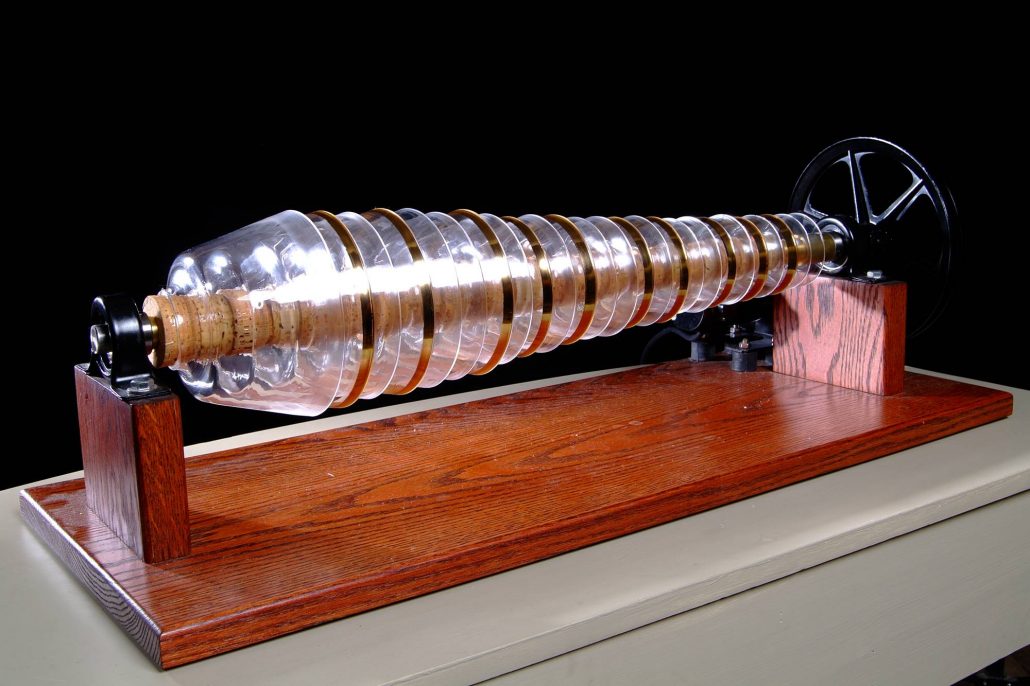Glass Harmonica
Melodic Percussions
Europe
Between 1001 and 1900 AD
Video
The glass harmonica, also called the armonica, is a revolutionary musical instrument invented by Benjamin Franklin in 1761. Inspired by the ethereal sound of water-tuned wine glasses, Franklin transformed this concept into a more practical and expressive instrument. The glass harmonica has a distinctive tone that captivated audiences and composers during its heyday, earning it a cherished place in music history.
Origins and Invention
While attending a concert in London, Franklin witnessed Edward Delaval creating music by rubbing the rims of wine glasses filled with water. Struck by the beauty of the sound, Franklin envisioned a more efficient design. He collaborated with London glassblower Charles James to craft an instrument that eliminated the need for water tuning, resulting in the first glass harmonica. The instrument was initially embraced by European musicians and quickly gained fame for its unique sound.
Design and Construction
The glass harmonica’s innovative design set it apart from earlier instruments:
- Composition: It consists of 37 glass bowls of varying sizes, each producing a specific pitch.
- Structure: The bowls are mounted horizontally on an iron spindle, which rotates when turned by a foot pedal. This allows the musician to play continuously without manual adjustment.
- Color Coding: Each bowl is color-coded for easy identification of notes, similar to a piano keyboard.
- Unique Features: Players moisten their fingers and rub them along the spinning glass rims to produce sound. The harmonica is capable of producing up to ten notes or chords simultaneously, offering exceptional tonal versatility.
Musical Significance
The glass harmonica’s celestial tones have been described as soft, penetrating, and flute-like, with a range spanning up to four octaves. Its unique sound inspired many renowned composers:
- Wolfgang Amadeus Mozart composed two works for the instrument, including the celebrated Adagio and Rondo.
- Ludwig van Beethoven, Christoph Willibald Gluck, and Gaetano Donizetti included the glass harmonica in their compositions.
It became a staple of chamber music and intimate performances, with its delicate sound perfectly suited to smaller venues.
Historical Trajectory
Rise to Popularity
By 1790, an estimated 5,000 glass harmonicas had been constructed and played across Europe. Its otherworldly sound made it a favorite instrument for salons and aristocratic gatherings. Performances featuring the glass harmonica were celebrated for their emotional depth, with audiences often moved to tears.
Decline in Use
Despite its initial popularity, the glass harmonica fell out of favor by 1835. Contributing factors included:
- The rise of orchestral music requiring louder instruments to fill larger concert halls.
- Competition from more versatile instruments like the piano.
- Superstitions surrounding the instrument, with some believing its sound could cause nervous disorders or even madness.
Modern Revival
The 20th century saw renewed interest in the glass harmonica:
- Bruno Hoffmann: A German musician who revived its use in classical music.
- Gerhard Finkenbeiner: In 1984, Finkenbeiner redesigned the instrument using modern materials and techniques, ensuring greater durability and playability.
- Sascha Reckert: A contemporary musician who continues to produce and perform with the glass harmonica.
Today, the glass harmonica is used in experimental music, film scores, and historical performances, maintaining its allure as an instrument of mystery and beauty.
Interesting Facts
Benjamin Franklin regarded the glass harmonica as one of his most satisfying inventions. Performers have noted its almost hypnotic effect on listeners, with some audiences reporting sensations of tranquility and introspection.
Conclusion
The glass harmonica remains a testament to Franklin’s ingenuity, blending science and art to create an instrument that continues to inspire musicians and audiences alike. Its hauntingly beautiful tones ensure its place as one of the most unique and evocative instruments in musical history.
FAQ
What is the glass harmonica made of?
The glass harmonica is made of 37 glass bowls mounted on a rotating iron spindle, with the bowls varying in size and thickness to produce specific pitches.
Who invented the glass harmonica?
The glass harmonica was invented by Benjamin Franklin in 1761, inspired by the sound of water-tuned wine glasses.
Why did the glass harmonica fall out of popularity?
The glass harmonica declined in popularity due to the rise of louder orchestral instruments, larger concert halls, and superstitions about its effects on health.
What kind of music is written for the glass harmonica?
The glass harmonica has been used in classical music by composers like Mozart and Beethoven, and it continues to appear in experimental and film music.
Is the glass harmonica still played today?
Yes, the glass harmonica is still played, especially in experimental music and historical performances, thanks to modern redesigns and dedicated musicians.
 Links
Links
References
Other Instrument
Categories


















